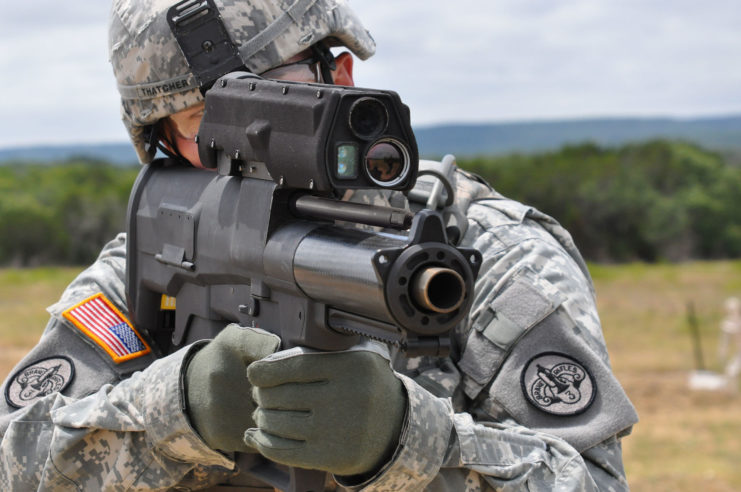Discussions of the future of armed combat including the XM25 have long been awash in fantastic predictions about the ways that it will be irrevocably changed by new technologies – and given the incredible changes that veterans have witnessed over the last 75 years alone, it seems hard to argue that what we think of today as war may be something else entirely by the time the next generation of soldiers suits up for operational readiness.
One thing has never changed, however, since the dawn of projectile weapons: from the moment the first caveman threw a stone at another, when things started flying through the air, people got out of the way.
United States Army Col. Rhett Thompson leads the Soldier Requirements Division at Fort Benning in the state of Georgia, puts it succinctly:

“When you start the firefight … everybody goes to ground.” It is hardly surprising that a countermeasure to this should be one of the Army’s top priorities as military technology continues to evolve at the breakneck pace it has maintained since the first World War – trench warfare is a perfect example of the stalemates interspersed with brutality that have made up conventional warfare for the better part of the last few centuries.
It is with this objective in mind that the army is in pursuit of an infantry weapon that may be used to destroy targets behind cover, or a counter-defilade weapon. Currently, two infantrymen per squad are equipped with rifle-mounted M320 grenade launchers for attacking covered targets, but the Army has been developing more advanced technology that will allow them to reach behind cover and around corners for at least fifteen years.
To this end, the Army engaged defense contractor Orbital ATK to develop a 25mm airburst weapon called the XM25, or “the Punisher” which was developed and tested in the field – but after a series of schedule delays and aborted operational testing in Afghanistan between 2010 and 2013, the program was summarily axed from the Pentagon budget in 2017. Results of the testing were mixed, but is safe to say that a well-functioning system that met the requirements of troops was not delivered before the contract with Orbital ATK was terminated.
Other tools exist to attack targets under or behind cover – including precision mortars and the current grenadier role – but the problem remains without a satisfactory solution, says Don Sando, director of the Maneuver Capabilities Development and Integration Directorate at Fort Benning. It is not for lack of interest in the problem that troops still lack an advanced cover-busting weapon, he adds – it’s just an incredibly complex problem with an uncountable number of variables.

Field testing of the XM25 yielded no less than 1300 recommendations for improvement, not all of which could be implemented before the cancellation of the program. Still, there are many programs and projects underway which may pick up where the XM25’s development left off and remedy the shortcomings and unforeseen problems it revealed.
The Platoon Arms and Ammunition Configuration Study is currently underway, and with it the Army hopes to anticipate and answer future challenges in ground combat including counter-defilade weaponry. Details were scant on possible contenders to replace the XM25 as well as the duration of the study; this is hardly surprising given the secrecy required of a new weapons programme.

In the interim, the Army hopes to use its Precision Grenadier program answer some of the challenges associated with counter-defilade by 2028. But as Thompson notes, no single solution is likely to answer the requirements of every unit – the Army operates in varying conditions across much of the globe, so a “one-size-fits-all” solution is highly unlikely.
Another Article From Us: 80 years on, the de Havilland Mosquito takes shape once again
It is certain that whatever solution arrives will forever change the pace of ground combat as we know it.
